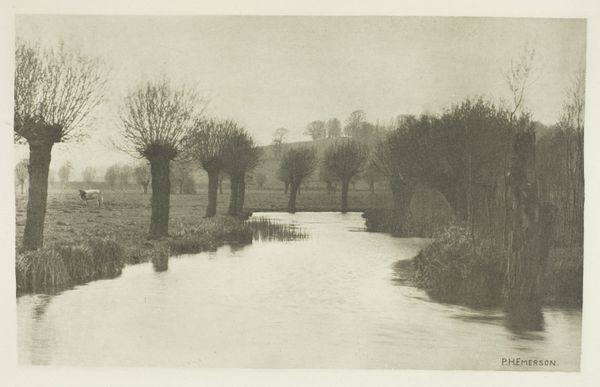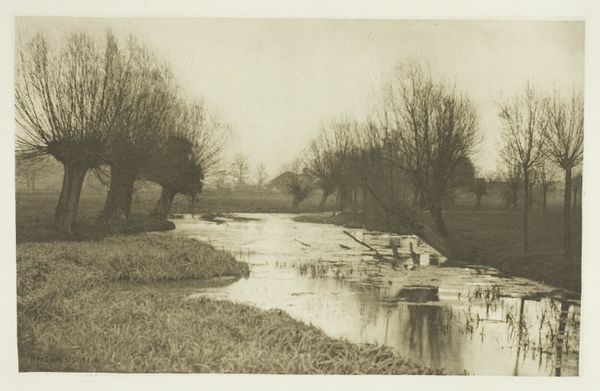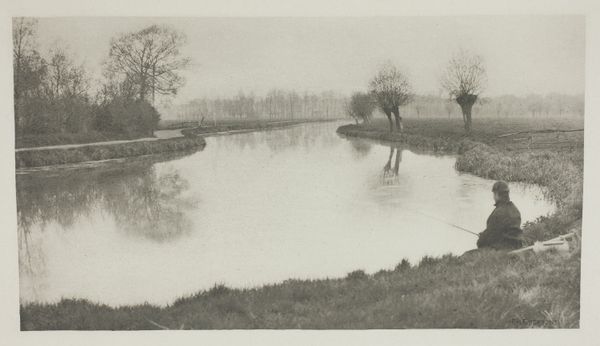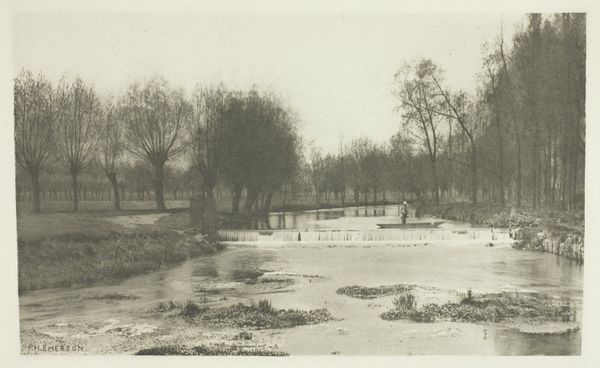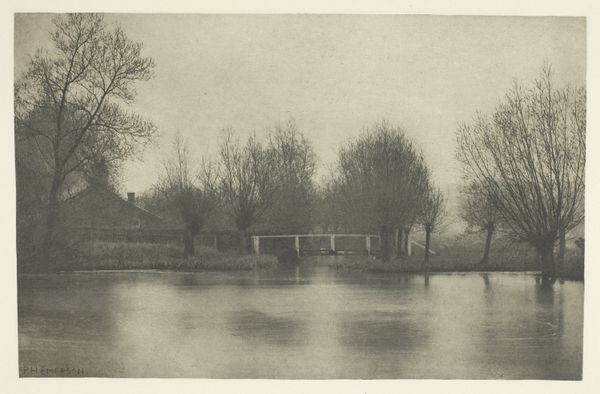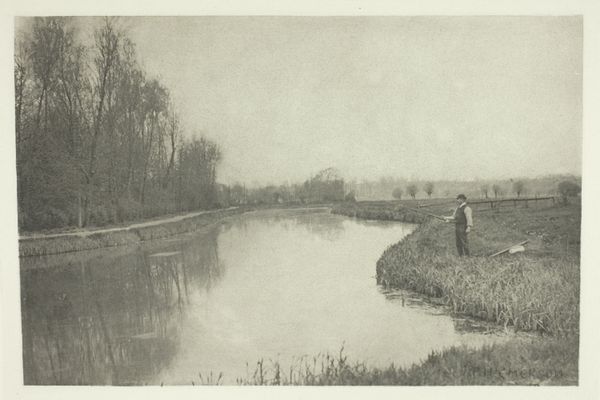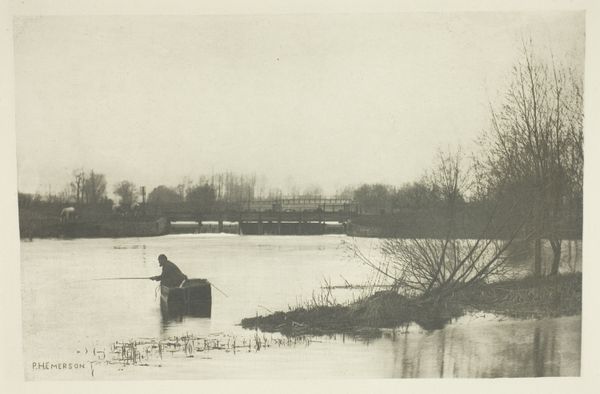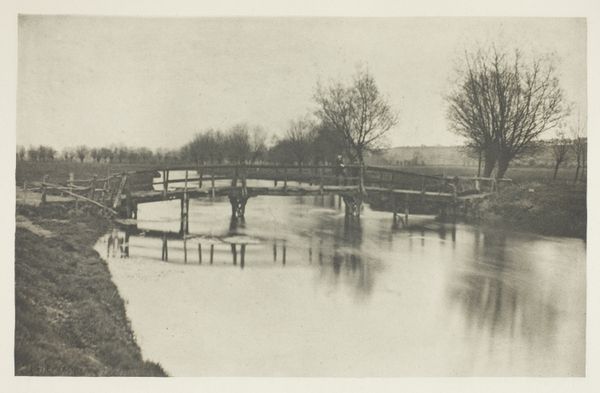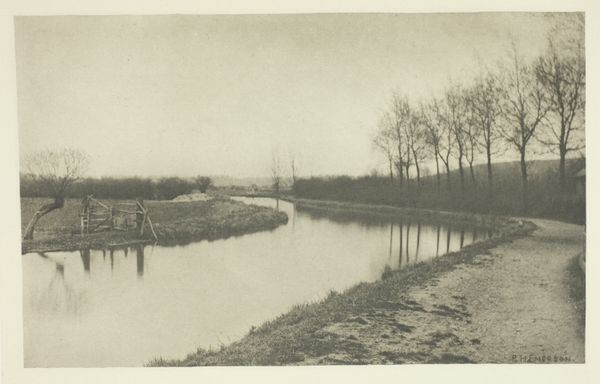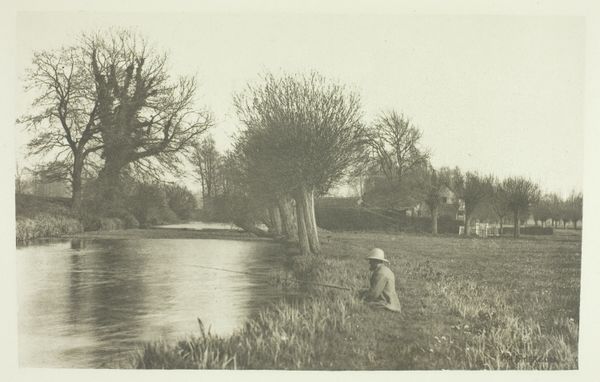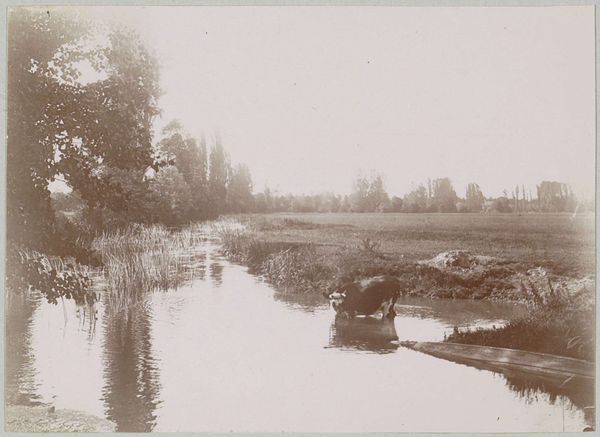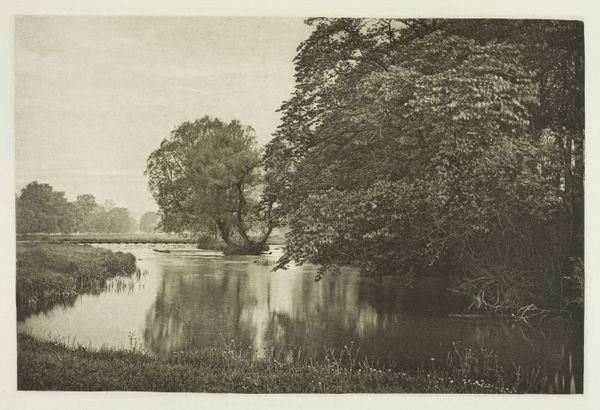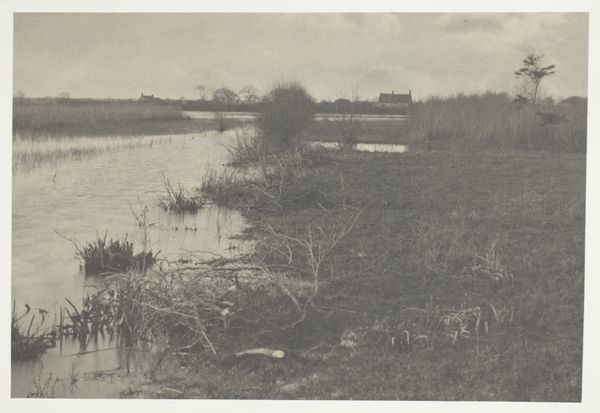
plein-air, paper, photography
#
16_19th-century
#
countryside
#
impressionism
#
organic shape
#
plein-air
#
landscape
#
paper
#
nature
#
photography
Dimensions: 12.7 × 19.9 cm (image); 15.5 × 24.6 cm (paper); 24.5 × 32 cm (album page)
Copyright: Public Domain
Curator: This photograph, titled "Stanstead from the Lea," was taken by Peter Henry Emerson around the 1880s. You can find it here at the Art Institute of Chicago. It’s a stunning example of his dedication to naturalistic photography, capturing the serene landscape of the River Lea. Editor: Mmm, instantly makes me feel peaceful...almost melancholic, like a quiet Sunday afternoon in a world before everything got so darn loud. The muted tones…the way the trees frame the water…It feels incredibly intimate, like a memory. Curator: That intimacy is precisely what Emerson strived for. He aimed to depict rural life authentically, pushing back against the prevailing artificiality of studio photography. Think about the social context of late 19th-century England. Industrialization was rapidly changing the landscape, and Emerson’s work offered a nostalgic view of an idealized rural past, particularly the vanishing agrarian lifestyle. He argued vehemently that photography should embrace "naturalism". Editor: Which meant what, exactly? Sorry, my brain's a little… impressionistic today. Curator: For Emerson, it meant representing scenes as the human eye actually perceives them, complete with selective focus. He rejected manipulative techniques and promoted minimal intervention. Editor: Ah, so less retouching and more just… being present. I can dig that. The texture here is interesting too. The softness in the water creates almost an impressionistic, blurry surface to counterpoint the sharper trees. It’s very tactile. Did Emerson work with specialized paper, do you think? It almost looks hand-printed… Curator: He favored platinum prints, which provided a wide tonal range and exceptional detail. Emerson wasn’t just capturing a landscape; he was engaging in a broader debate about photography’s status as art. His commitment to naturalism resonated with contemporaneous intellectual currents emphasizing empirical observation and the rejection of artifice. He thought photography could be more than just mere representation; it could be expressive and carry an aesthetic argument. Editor: It feels strangely contemporary too, in a way. This pre-industrial silence… almost resonates more strongly in today’s hyper-connected world. It’s a reminder of a quieter way of being. Curator: Absolutely. The image's stillness allows for critical reflection on the speed and artifice of contemporary culture, offering a subtle form of social commentary by contrasting past and present conditions. Editor: Yeah. Beautifully articulated. You make me think, and now I feel all intellectual! Curator: And you bring the poetry; together we managed to see, in the work, beyond its surface!
Comments
No comments
Be the first to comment and join the conversation on the ultimate creative platform.
